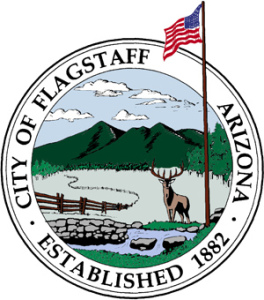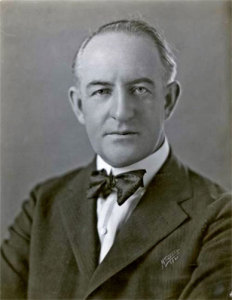Flags flutter from flagstaffs in Flagstaff
 No city in the U.S. seems more appropriate for an article about flags than Flagstaff, Arizona. Whether it’s a municipal flag, a state flag or the American flag, the town’s name literally lifts them upward.
No city in the U.S. seems more appropriate for an article about flags than Flagstaff, Arizona. Whether it’s a municipal flag, a state flag or the American flag, the town’s name literally lifts them upward.
Karl Eberhard, historic preservation officer for the city, explained how the location came to be named after a flagpole. Or, actually, a flag-pine!
“A mountain man named Antoine Leroux knew the location of a source of water at the base of the San Francisco Peaks,” Eberhard said. “In 1876, a group of New Englanders left from Boston in search of the excellent farm land that they had heard about….According to legend, it was this group who placed a flag on top of a denuded pine tree, celebrating the centennial of the Declaration of Independence, and thus gave the city the name by which it has been known ever since.”

While the site of the original Flagstaff flagstaff has not been precisely located, he said that a monument commemorating the event has been placed amid “three postulated locations.”
Eberhard described the city’s logo as containing “a view from the city that captures three icons of the area – the San Francisco Peaks, elk and pine trees.” The Flagstaff municipal flag consists of that image on a white background.

As for Arizona’s flag, the state was late in joining the Union. It didn’t achieve that honor until Valentine’s Day 1912, when it became the 48th state – and the last one to join for nearly half-a-century. The state flag would not be selected for another five years. Oddly, it was chosen against the wishes of the governor.
The design has been lauded by flag experts for its simplicity. In the words of the book, “Complete Flags of the World,” the Arizona banner has “red and yellow rays [that] recall the period of Spanish rule” and a copper-colored star reflective of the mineral wealth of the region. The swath of blue on the bottom symbolizes the Colorado River.

That design had a unique genesis. It debuted as the banner of a competitive rifle team from Arizona that entered a national shooting competition and found out, to the dismay of the members, that every other entrant had its own flag. So the Arizonans hurriedly created one.
The state flag had early detractors, including people who said it looked too much like the flag of Japan. “We have our doubts as to whether the idea will ever become popular,” a newspaper wrote, adding that flags “represent nation-wide ideas and ideals rather than state-wide ideas and ideals.”
That view apparently hit home with Arizona Governor Thomas Campbell. In late February 1917, when a bill came before him to approve the state flag, he “refused to take action,” The Tucson Citizen reported. But “the five-day limit [for his decision] expired…and the bill [was] automatically injected into the statutes.”
With so many interesting flag stories, it’s no wonder Arizona has a city named Flagstaff.
